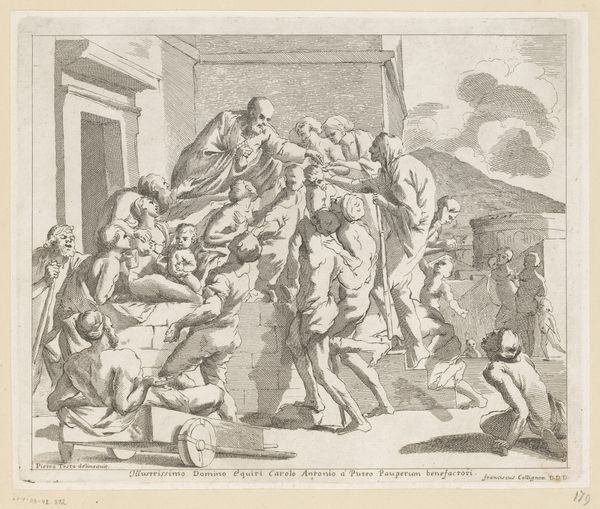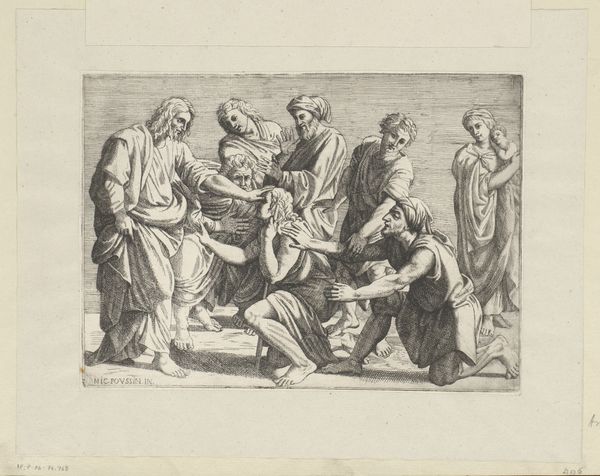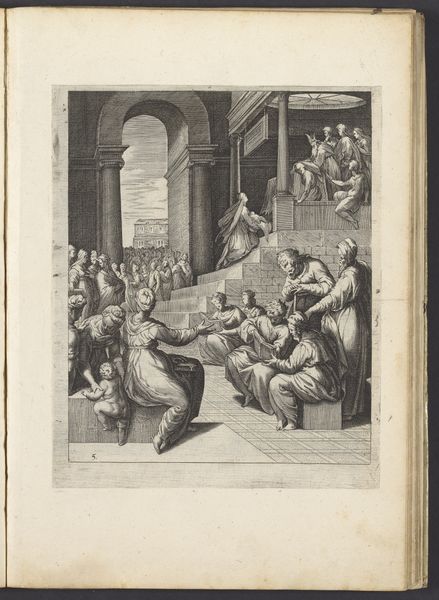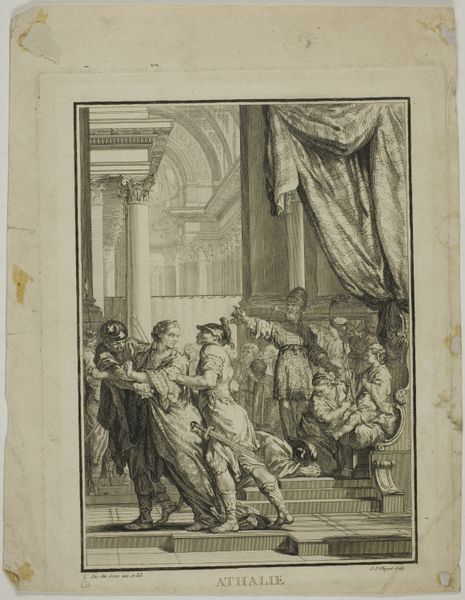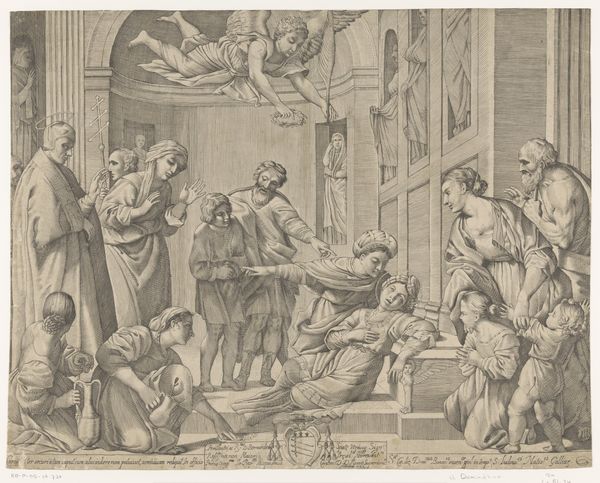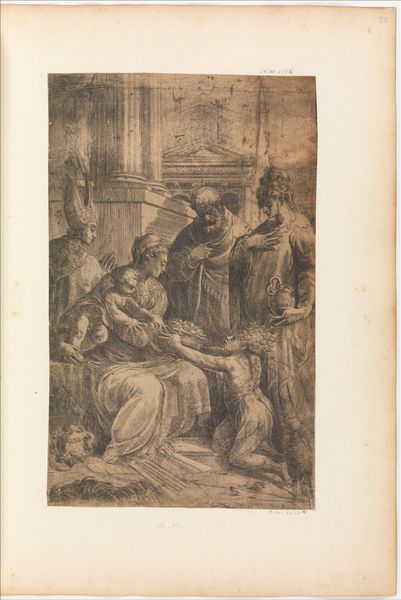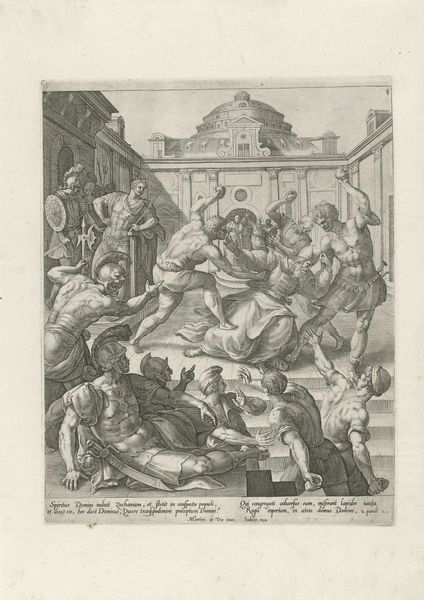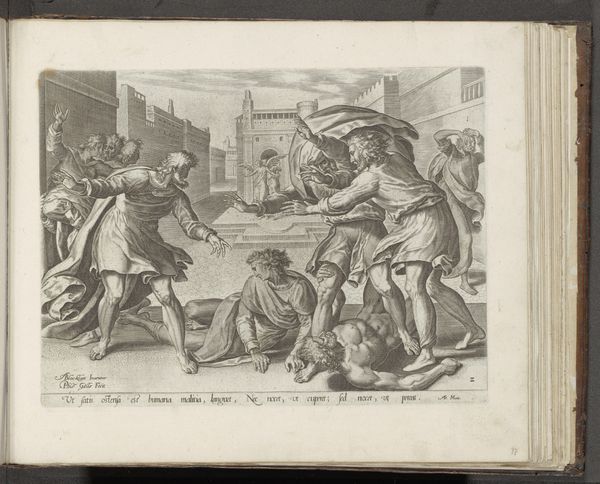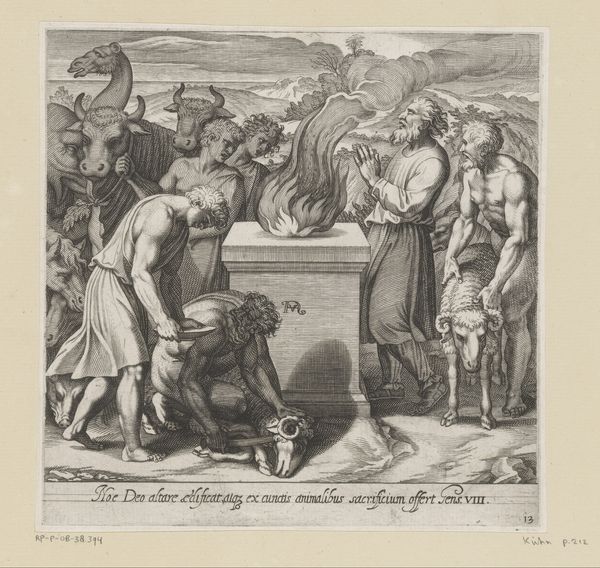
Reliëf met het oordeel van Lucius Junius Brutus in de Vierschaar van het Stadhuis op de Dam 1655 - 1665
0:00
0:00
print, sculpture, engraving
#
narrative-art
#
baroque
# print
#
classical-realism
#
figuration
#
sculpture
#
genre-painting
#
history-painting
#
engraving
Dimensions: height 433 mm, width 321 mm
Copyright: Rijks Museum: Open Domain
Curator: This engraving by Hubert Quellinus, created between 1655 and 1665, depicts a grisly scene—"The Judgment of Lucius Junius Brutus." What are your immediate thoughts? Editor: Brutal. Visually and thematically. The sheer quantity of bodies packed into this relatively small space creates an atmosphere of inescapable dread. You immediately understand something awful has happened. Curator: Absolutely. Quellinus situates this in the Vierschaar of the Stadhuis in Amsterdam. Brutus, a founder of the Roman Republic, condemned his own sons to death for treason. It speaks volumes about justice, duty, and the price of liberty, especially within a patriarchal structure. Editor: It's important to consider that the artist probably had specific workshop practices and engraving techniques. Look at the linear quality—the varying thickness of the lines and their density produce stark tonal contrasts, emphasizing the materiality of the engraving itself. It forces the viewer to consider how an image such as this makes its way into society and whose interests it represents. Curator: Precisely. The architecture and sculptural elements like the Capitoline Wolf all contribute to the glorification of Roman civic virtue. And considering the era of its creation, in the Dutch Golden Age, this classical subject would carry immense weight regarding their own burgeoning republic and civic identity. The narrative promotes particular values, but at whose expense? Editor: Note, too, the engraver's labour itself. These detailed images required careful craftsmanship. There is labour behind that political narrative, feeding it and, if consumed successfully by its audience, validating it. Curator: Examining the engraving from an intersectional lens unveils uncomfortable truths about power, justice, and sacrifice, demanding scrutiny. This piece exemplifies how narratives from the past can continue to inform – and perhaps haunt – our present understanding of civic responsibility. Editor: And in studying the labor invested and the image-making choices, we get some insight as to how the machine of this narrative moves its gears within culture at large, one print at a time.
Comments
No comments
Be the first to comment and join the conversation on the ultimate creative platform.

